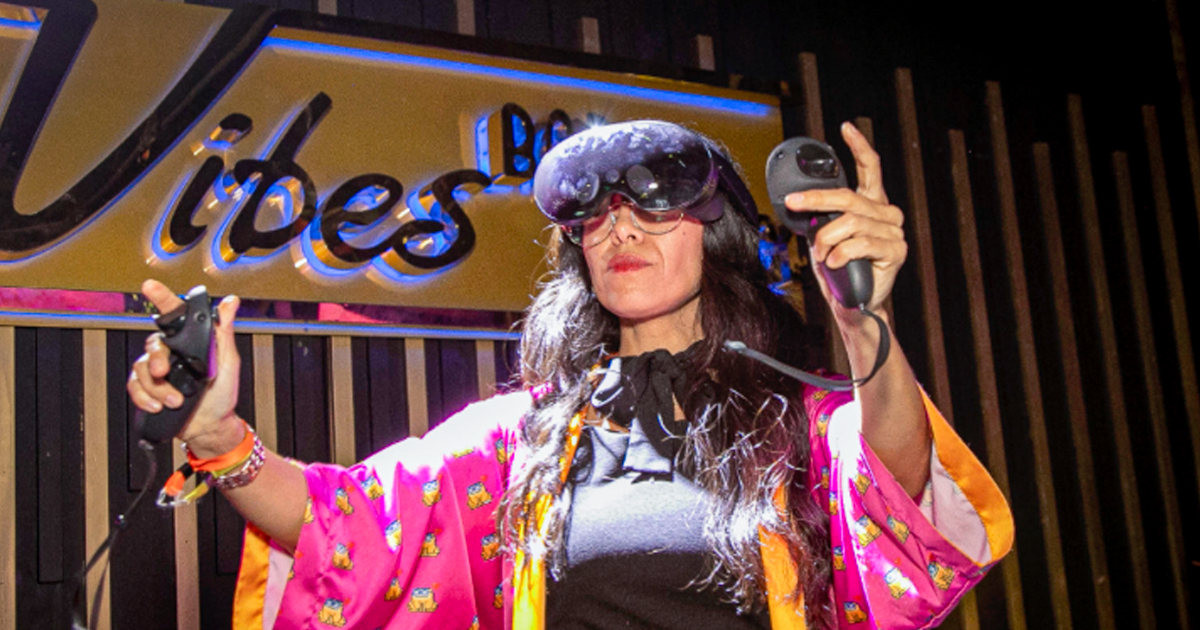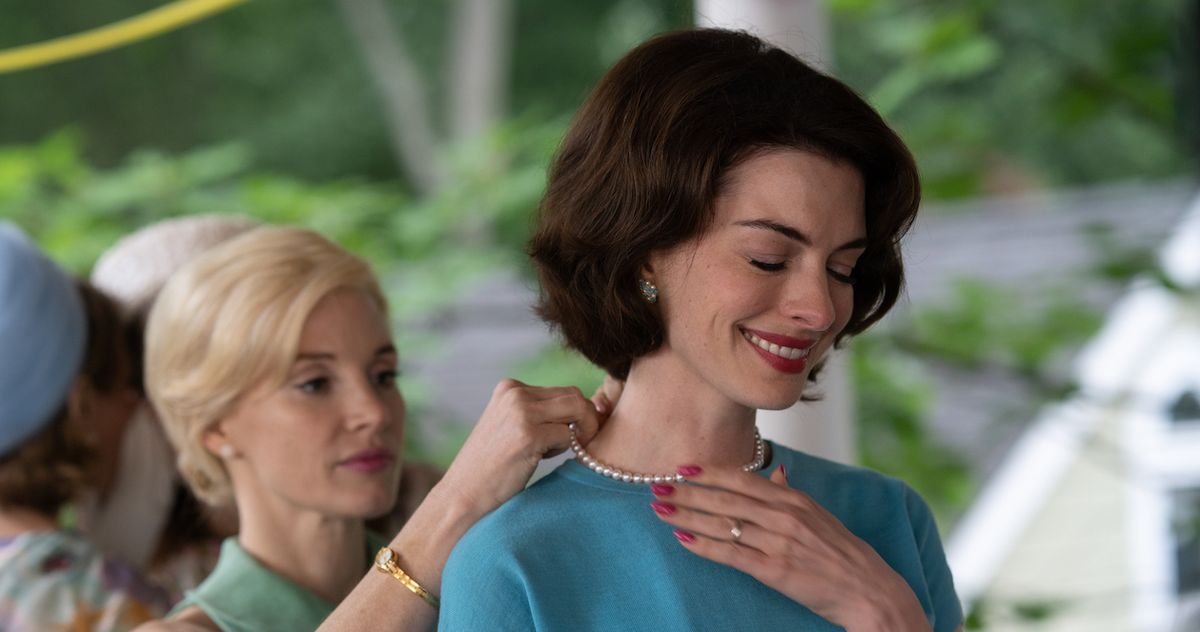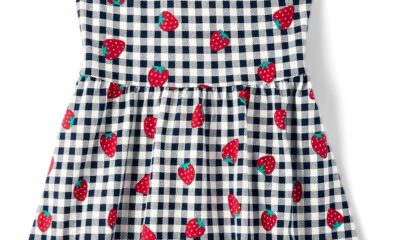Lifestyle
Fake beauty queens charm judges at the Miss AI pageant

Beauty pageant contestants have always been judged by their looks, and, in recent decades, by their do-gooderly deeds and winning personalities.
Still, one thing that’s remained consistent throughout beauty pageant history is that you had to be a human to enter.
But now that’s changing.
Models created using generative artificial intelligence (AI) are competing in the inaugural “Miss AI” pageant this month.
The contestants have no physical, real-world presence. They exist only on social media, primarily Instagram, in the form of photorealistic images of extremely beautiful, sexy young women — all of it created using a combination of off-the-shelf and proprietary AI technology.
Some of the characters can also be seen talking and moving in videos. And they share their “thoughts” and news about their “lives” mostly through accompanying text on social media posts.
In one video, Kenza Layli, created by a team from Morocco, speaks in Arabic about how happy she is to have been selected as one of finalists for Miss AI.
“I am proud to receive this nomination after only existing for five months, especially since this invention is Arab and Moroccan 100%,” the AI model said.
In another, the Brazilian entry, Ailya Lou, lip-synchs and bops around to a song in her pajamas.
Even though these beauty queens are not real women, there is a real cash prize of $5,000 for the winner. The company behind the event, the U.K.-based online creator platform FanVue, is also offering public relations and mentorship perks to the top-placed entry as well as to two runners-up.
According to a statement from the organizer, a panel of four judges selected 10 finalists from 1,500 submissions. This is the first of a series of contests for AI content creators that FanVue is launching under the “The FanVue World AI Creator Awards” umbrella. The results for Miss AI will be announced at the end of June.
“What the awards have done is uncover creators none of us were aware of,” said FanVue co-founder Will Monange in the statement. “And that’s the beauty of the AI creator space: It’s enabling creative people to enter the creator economy with their AI-generated creations without having to be the face themselves.”
New technology, old format
The organizers of Miss AI are touting it as the first such competition involving AI. Beauty pageants already exist elsewhere in the digital realm, for example on the online platform Second Life.
But in the real world, beauty pageants are fading. They are no longer the giant cultural draw they once were, attracting tens of millions of TV viewers during their peak in the 1970s and ’80s.
The events are controversial, because there’s a long history of them feeding into harmful stereotypes of women.

Indeed, all 10 Miss AI finalists fit in with traditional beauty queen tropes: They all look young, buxom and thin.
The controversial nature of pageants, coupled with the application of cutting-edge AI technology, is proving to be catnip for the media and the public. Simply put, sexy images of fake women are an easy way to connect with fans.
“With this technology, we’re very much in the early stages, where I think this is the perfect type of content that’s highly engaging and super low hanging fruit to go after, said Eric Dahan, CEO of the social media marketing company Mighty Joy.
In an interview with NPR, beauty pageant historian and Miss AI judge Sally-Ann Fawcett said she hopes to be able to change these stereotypes “from the inside” by focusing her judging efforts on the messaging around these AI beauty queens — and not just on their looks.
“Because they are all beautiful, I want somebody that I would be proud to say is an AI ambassador and role model giving out brilliant and inspiring messages, rather than just saying, ‘hello, I’m really hot!’ ” said Fawcett.
Like real life pageants, the Miss AI contestants’ social media feeds talk about the good causes the character supports. For example, the French avatar Anne Kerdi is a brand ambassador for the ocean conservation fund Océanopolis Acts, and Romania’s Aiyana Rainbow is described as an LGBTQ advocate.

Miss AI finalist, the AI model Anne Kerdi.
Anne Kerdi
hide caption
toggle caption
Anne Kerdi
But Fawcett said she wishes there was more variety in the submissions for this contest.
“I would like to see somebody of a different gender, somebody larger, somebody older, somebody with flaws,” Fawcett said. “There’s such a big scope. But I think because it’s the first year, everyone’s adhering to that typical stereotype of beauty.”
Artist and filmmaker Lynn Hershman Leeson, whose work explores the intersection of technology and feminism, said she is baffled by the degree to which the AI creators for this contest stuck to traditional beauty pageantry tropes.
“The AI world has such a range of possibilities to consider for attractiveness,” Hershman Leeson said in an interview with NPR. “And they’ve chosen to just look for some kind of surface resemblance to what’s always been considered a winner in this kind of competition. It doesn’t go beyond the stereotype of the stereotype.”
A digital marketing opportunity disguised as a beauty pageant
The Miss AI contestants aren’t just being judged according to their looks and messaging. There are two more unconventional criteria in play not traditionally found in beauty pageant judging: the skill with which the AI creators employ AI technology to make their models look hyperreal, and how deeply and quickly these avatars are engaging audiences on their social media feeds.
Creating a photorealistic human is no easy feat. And, maybe more importantly, Miss AI isn’t a beauty contest at heart. It’s really about showcasing AI as a marketing tool — specifically in the realm of AI influencers.

Most social media influencers are human beings. The influencer market is worth more than $16 billion, according to one estimate, and is growing fast. According to a recent Allied Market Research report, the global influencer marketplace is expected to reach $200 billion by 2032.
AI influencers like the Miss AI finalists are starting to gain traction within this realm — especially if they can look and act like humans.
One of the world’s most successful AI influencers, Aitana Lopez, earns her creators — who are part of the Miss AI judging panel — several thousand dollars a month in income from brand partnerships.
That’s a small amount compared with the millions top human influencers, like Kylie Jenner and Charli D’Amelio, currently make in cosmetics, fashion and other deals. But it may not be too long before AI influencers start to catch up.

Miss AI finalist Seren Ay.
ai.serenay
hide caption
toggle caption
ai.serenay
Mohammad Talha Saray, a member of the team in Ankara, Turkey, that created one of the Miss AI finalists — the red-haired, green-eyed Seren Ay, said they came up with the AI model five or six months ago as a brand ambassador for their jewelry e-commerce company because human influencers they approached cost too much money and were too demanding. Saray said his AI avatar is cheaper, more flexible and doesn’t talk back.
“With the AI, there’s no limit,” Saray told NPR. “You can just do whatever you want. Like, if you want to just do something on the moon or on the sun, whatever you want, you can just do it — all with your imagination.”
Saray said his jewelry business has grown tenfold since Seren Ay came on board. Her social media videos garner millions of views.
“Our goal for Seren Ay is to position her as a globally recognized and beloved digital influencer,” said Saray. “Winning the Miss AI competition will be a significant step toward achieving these goals, allowing us to reach a wider audience and seize more collaboration opportunities.”
He said AI influencers do not have the ability to move people as much as their human counterparts can.
“People are always going to know that it’s an artificial intelligence,” Saray said.
Yet he said he’s constantly astonished by the number of people commenting on Seren Ay’s posts on Instagram who seem to mistake the AI character for a real human being.
“People say they have feelings for Seren AI,” said Saray. “They’re congratulating her. They’re saying they hope she wins the prize.”

Lifestyle
'Wait Wait' for July 27, 2024: With Not My Job guest Kathleen Hanna

Kathleen Hanna of The Julie Ruin performs onstage at the 2016 Panorama NYC Festival – Day 2 at Randall’s Island on July 23, 2016 in New York City. (Photo by Nicholas Hunt/Getty Images)
Nicholas Hunt/Getty Images/Getty Images North America
hide caption
toggle caption
Nicholas Hunt/Getty Images/Getty Images North America
This week’s show was recorded in Chicago with host Peter Sagal, judge and scorekeeper Bill Kurtis, Not My Job guest Kathleen Hanna and panelists Meredith Scardino, Peter Grosz, and Mo Rocca Click the audio link above to hear the whole show.
Who’s Bill This Time
Momala Takes Over; Assigned Seats Are Back; And The Heat Is On
The Olympic Torch Reporch
Our Summer Olympics Preview
Bluff The Listener
Our panelists tell three stories about someone committing an office faux pas, only one of which is true.
Not My Job: We quiz Bikini Kill’s Kathleen Hanna on Hanna-Barbera
Punk icon Kathleen Hanna plays our game called, “Kathleen Hanna Meet Hannah-Barbera.” Three questions about the animation studio.
Panel Questions
Hide Your Receipts; VR Meets ER; Avocado Apologies
Limericks
Bill Kurtis reads three news-related limericks: Situation Room Cocktails; Burrito Bird; Hopped Up Sharks
Lightning Fill In The Blank
All the news we couldn’t fit anywhere else
Predictions
Our panelists predict what will be the big story out of the Paris Olympic Games
Lifestyle
L.A. Affairs: At 77, I had a crush on my best friend’s widower. Did he feel the same way?
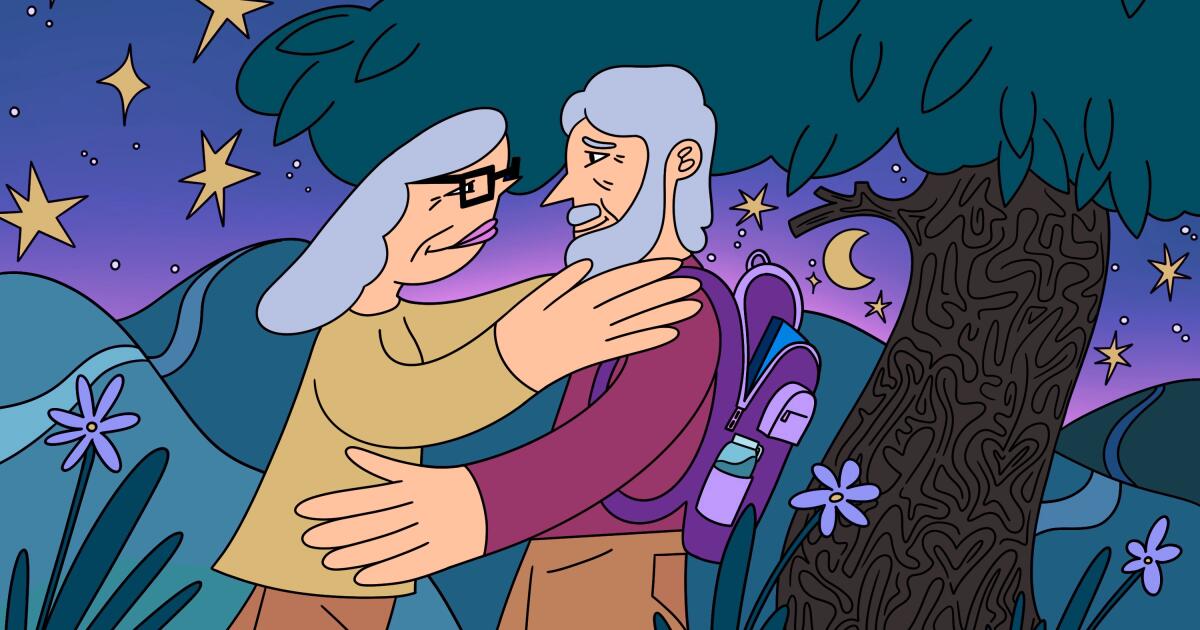
At 77, I had given up. After two failed marriages and years of unsuccessful dating, I accepted what seemed to be my fate: single for almost 40 years and single for however many remained. You don’t get it all, I told myself. I was grateful for family, friends and work. Life settled into what felt like order.
Until Ty.
As the husband of my best friend, he was no stranger, but he was usually peripheral. Then 10 years ago, my friend got lung cancer. I watched during visits, stunned at how nurturing Ty could be, taking care of her even though they had separated years before at her request.
After she died, Ty and I stayed in touch sporadically: a surprise sharing of his second granddaughter a year after we scattered my friend’s ashes, an invitation to the launch of my book a year later. Ty attended, hovering in the back, emerging after everyone left to attentively help load my car.
Two more years passed. During quiet moments, I remembered his sweetness. I also remembered his handsome face and long, tall body. Confused about what I wanted, I texted Ty, who’s an architect, under the guise of purchasing a tree for my backyard.
We spent an afternoon at the nursery, laughing, comparing options and agreeing on a final selection. When the tree arrived, I emailed a photo. He emailed a thank you.
Another three years passed, broken only by news of his third granddaughter and my memories of how good it felt to be with him. Alert to his attentiveness, but unsettled by both his remove and my growing interest, I risked reaching out again, this time about remodeling my garage.
Ty spent several hours at my house making measurements, checking the foundation and sharing pictures of his home in Topanga. His sketches for the garage arrived two weeks later via email.
I was grateful for his help but unsure over what sort of friendship we were developing, at least from his point of view. I, however, was clear. I wanted him to wrap his long arms around me, tell me sweet things and make me his.
Instead, I sent a gift card to a Topanga restaurant to thank him for his drawings.
“Maybe we should spend it together,” he texted.
We dined in the dusk of late summer. Our talk was easy. Discomfort lay in the unspoken. Anxious for clarity, I repeatedly let my hand linger near the candle flickering in the middle of our table. It remained untouched.
And that was as far as I was willing to go. I refused to be any more forward, having already compromised myself beyond my comfort level with what seemed, at least to me, embarrassingly transparent efforts to indicate my interest. Not making the first move was very important. If a man could not reach out, if he didn’t have the self-confidence to take the first step, he would not, I adamantly felt, be a good partner for me.
Two weeks later, Ty did email, suggesting an early evening hike in Tuna Canyon in Malibu. The setting was perfect. Sun sparkled off the ocean. A gentle breeze blew. We climbed uphill for sweeping coastal vistas and circled down to the shade of live oaks, touching only when he took my hand to steady me where the path was slippery. At the end of the trail, overlooking the juncture between the mountains and the sea, we stood opposite each other and talked animatedly for almost an hour, both of us reluctant to part.
Our conversation was engaging, but my inner dialogue was louder. When, I kept thinking, is this man going to suggest we continue the evening over dinner? We didn’t have to go out. We could eat at his house. It was 7 p.m., for God’s sake. Passing hikers even stopped to remark on our matching white hair and how well they thought we looked together. It was like a movie scene where the audience is yelling, “Kiss her, kiss her,” rooting for what they know is going to happen while the tension becomes almost unbearable. But bear it I did.
Each of us ate alone.
A few weeks later, at his suggestion, we were back at Tuna Canyon. This time Ty did invite me to end the evening at his house. Sitting close on his couch, but not too close, we drifted toward each other in the darkening room. His shoulder brushed mine reaching for his cup of coffee. My hip pressed his as I leaned in for my tea. Slowly, sharing wishes and hopes for our remaining years, we became shadows in the light of the moon. And in that darkness, in that illuminated space, he reached out.
This reticent man, this man who was so slow to move toward me, this sensitive man who hid himself behind layers so opaque I was unsure of his interest, released all that he had inside him.
“I wanted you,” Ty repeated again and again. “I was afraid of ruining things. You were her best friend. I didn’t want to lose your friendship.”
Our pent-up tension exploded.
Stunned and thrilled, I leaned into the space he opened.
Three years later, it is a space we continue to share: a place where neither of us has given up, a place where he wraps me in his long arms, a place we hold carefully against our diminishing days.
The author is the owner of a preschool in Venice as well as a psychotherapist, photographer and writer. Her first book, “Naked in the Woods: My Unexpected Years in a Hippie Commune,” was published in 2015. Her newest manuscript, “Bargains: A Coming of Aging Memoir Told in Tales,” is seeking a publisher. She lives in Mar Vista and can be found at margaretgrundstein.com, Instagram @margwla, Medium @margaretgrundstein and Substack @mgrundstein.
L.A. Affairs chronicles the search for romantic love in all its glorious expressions in the L.A. area, and we want to hear your true story. We pay $400 for a published essay. Email LAAffairs@latimes.com. You can find submission guidelines here. You can find past columns here.
Lifestyle
'Deadpool & Wolverine' is a self-cannibalizing slog
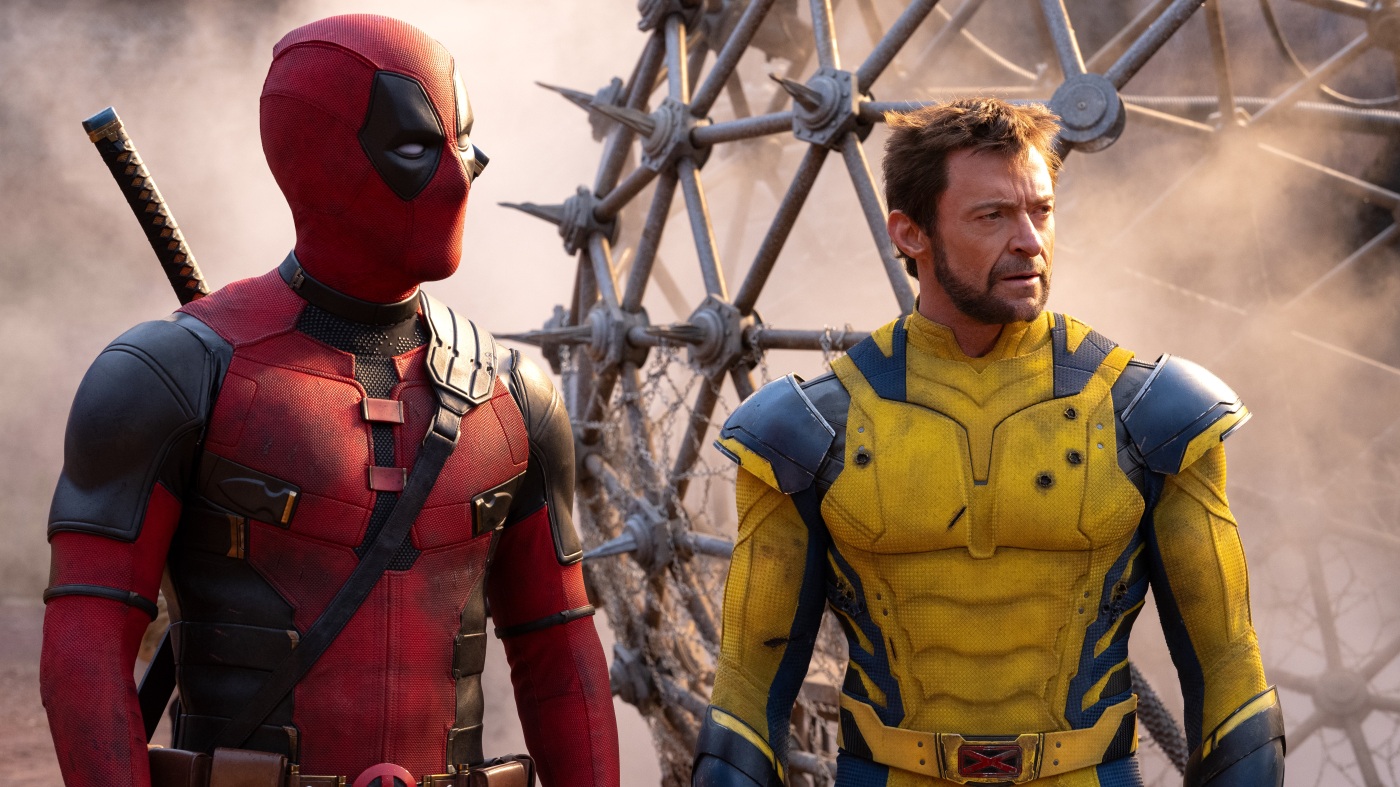
Ryan Reynolds stars as Deadpool and Hugh Jackman as Wolverine in an odd-couple action hero pairing.
Jay Maidment/20th Century Studios
hide caption
toggle caption
Jay Maidment/20th Century Studios
When Fox Studios released the first Deadpool movie back in 2016, it played like an irreverently funny antidote to our collective comic-book-movie fatigue. Wade Wilson, or Deadpool, was a foul-mouthed mercenary who obliterated his enemies and the fourth wall with the same gonzo energy.
Again and again, Deadpool turned to the camera and mocked the clichés of the superhero movie with such deadpan wit, you almost forgot you were watching a superhero movie. And Ryan Reynolds, Hollywood’s snarkiest leading man, might have been engineered in a lab to play this vulgar vigilante. I liked the movie well enough, though one was plenty; by the time Deadpool 2 rolled around in 2018, all that self-aware humor had started to seem awfully self-satisfied.
Now we have a third movie, Deadpool & Wolverine, which came about through some recent movie-industry machinations. When Disney bought Fox a few years ago, Deadpool, along with other mutant characters from the X-Men series, officially joined the franchise juggernaut known as the Marvel Cinematic Universe.
That puts the new movie in an almost interesting bind. It tries to poke fun at its tortured corporate parentage; one of the first things Deadpool says is “Marvel’s so stupid.” But now the movie also has to fit into the narrative parameters of the MCU. It tries to have it both ways: brand extension disguised as a satire of brand extension.

It’s also an odd-couple comedy, pairing Deadpool with the most famous of the X-Men: Logan, or Wolverine, the mutant with the unbreakable bones and the retractable metal claws, played as ever by a bulked-up Hugh Jackman.
The combo makes sense, and not just because both characters are Canadian. In earlier movies, Deadpool often made Wolverine the off-screen butt of his jokes. Both Deadpool and Wolverine are essentially immortal, their bodies capable of self-regenerating after being wounded. Both are tormented by past failures and are trying to redeem themselves. Onscreen, the two have a good, thorny chemistry, with Jackman’s brooding silences contrasting nicely with Reynolds’ mile-a-minute delivery.
I could tell you more about the story, but only at the risk of incurring the wrath of studio publicists who have asked critics not to discuss the plot or the movie’s many, many cameos. Let’s just say that the director Shawn Levy and his army of screenwriters bring the two leads together through various rifts in the multiverse. Yes, the multiverse, that ever-elastic comic-book conceit, with numerous Deadpools and Wolverines from various alternate realities popping up along the way.

I suppose it’s safe to mention that Matthew Macfadyen, lately of Succession, plays some kind of sinister multiverse bureaucrat, while Emma Corrin, of The Crown, plays a nasty villain in exile. It’s all thin, derivative stuff, and the script’s various wink-wink nods to other shows and movies, from Back to the Future to Furiosa to The Great British Bake Off, don’t make it feel much fresher. And Levy, who previously directed Reynolds in the sci-fi comedies Free Guy and The Adam Project, doesn’t have much feel for the splattery violence that is a staple of the Deadpool movies. There’s more tedium than excitement in the characters’ bone-crunching, crotch-stabbing killing sprees, complete with corn-syrupy geysers of blood.

For all its carnage, its strenuous meta-humor and an R-rated sensibility that tests the generally PG-13 confines of the MCU, Deadpool & Wolverine does strive for sincerity at times. Some of its cameos and plot turns are clearly designed to pay tribute to Fox’s X-Men films from the early 2000s.
As a longtime X-Men fan myself, I’m not entirely immune to the charms of this approach; there’s one casting choice, in particular, that made me smile, almost in spite of myself. It’s not enough to make the movie feel like less of a self-cannibalizing slog, though I suspect that many in the audience, who live for this kind of glib fan service, won’t mind. Say what you will about Marvel — I certainly have — but it isn’t nearly as stupid as Deadpool says it is.

-

 World1 week ago
World1 week agoOne dead after car crashes into restaurant in Paris
-

 Midwest1 week ago
Midwest1 week agoMichigan rep posts video response to Stephen Colbert's joke about his RNC speech: 'Touché'
-

 News1 week ago
News1 week agoVideo: Young Republicans on Why Their Party Isn’t Reaching Gen Z (And What They Can Do About It)
-

 News1 week ago
News1 week agoIn Milwaukee, Black Voters Struggle to Find a Home With Either Party
-

 Politics1 week ago
Politics1 week agoFox News Politics: The Call is Coming from Inside the House
-

 News1 week ago
News1 week agoVideo: J.D. Vance Accepts Vice-Presidential Nomination
-

 Movie Reviews1 week ago
Movie Reviews1 week agoMovie Review: A new generation drives into the storm in rousing ‘Twisters’
-

 World1 week ago
World1 week agoTrump to take RNC stage for first speech since assassination attempt
